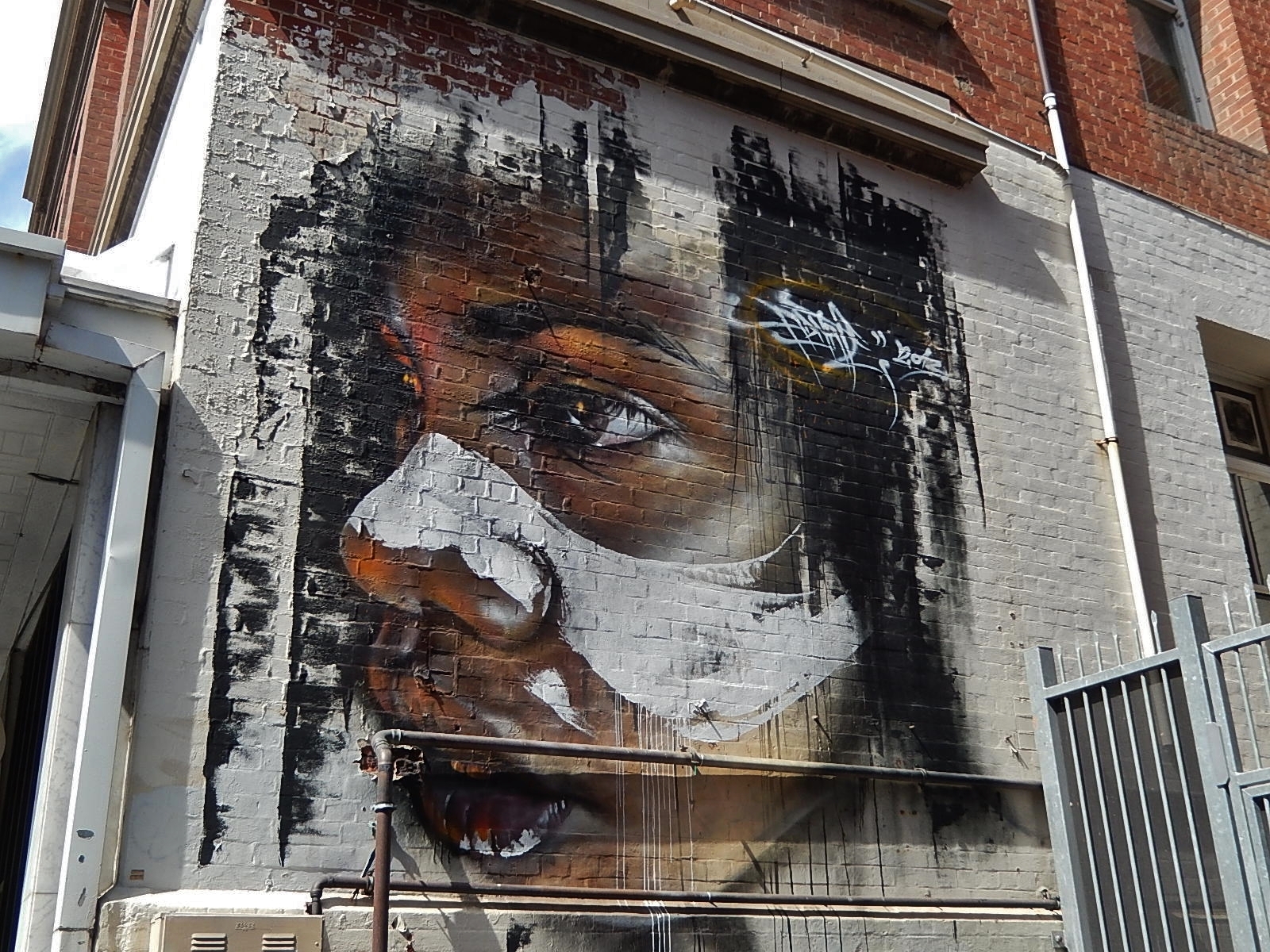If the 2019-20 Federal Budget is, as widely reported, going to set the tone for the next Federal Election, then it doesn’t appear likely that the election is going to be fought on Aboriginal and Torres Strait Islander policy issues. At least not from an economic perspective. There are a number of important spending announcements, but these are mostly small and sprinkled throughout the Budget. Many were already announced alongside the most recent Closing the Gap report. Furthermore, the $158 billion tax cut at the centre of the Budget will provide little direct impact for the majority of Aboriginal and Torres Strait Islander peoples.
When evaluating the Commonwealth Budget and its likely effect on Indigenous Australians, there are three broad areas that one might want to consider. First, what are the measures that are specific to Aboriginal and Torres Strait Islander Australians? Second, how are the general budget measures likely to impact on Aboriginal and Torres Strait Islander Australians specifically? Third, to what extent is the Budget built on Indigenous priorities, to what extent is it built on a solid evidence base, and to what extent will it contribute to new evidence going forward?
Indigenous specific measures
The 2019-20 Federal Budget has a range of new measures related to Aboriginal and Torres Strait Islander Australians. However, most are small to medium in size, do not feature heavily in the Budget message provided by the Coalition Government, and do not appear to fit into a larger policy framework or narrative. This is perhaps not surprising as the Commonwealth Government is in the midst of a substantial ‘Closing the Gap Refresh’, which is aiming to reset the policy agenda for Indigenous Australians at the national level, as well as the relationship between the Commonwealth and State/Territory governments on Indigenous policy.
As part of the Closing the Gap refresh, there was $276.5 million announced over the next five years to support Indigenous education. Much of this was announced in February. However, the Budget Papers show that a very large proportion of that expenditure will occur in the 2022-23 financial year. Leaving aside the uncertainty of an expenditure measure with two elections in between the announcement and the delivery, this is unlikely to have any effect on any of the Closing the Gap target for many years to come.
The $200 million on scholarships and mentoring in the Budget is in addition to $36.4 million (over five years) on extending Family Tax Benefit eligibility to families in receipt of ABSTUDY. While there is likely to be debate as to whether these amounts are large enough, it is promising that there is a (perhaps implicit) recognition that what happens outside the school and a family’s financial position is as large a determinant of education outcomes as what happens within the school.
While there are no details in the Budget, it is important that financial support is available for the vast majority of Indigenous students who attend public schools, not just those who attend private schools.
There is no evidence to support the view that attending a private school is associated with more rapid growth in literacy/numeracy for an Indigenous student (controlling for other characteristics). This would suggest then that spending a large amount of money on a scholarship for a single Indigenous student to attend a high fee paying private school is going to be of most benefit to the private schools not the Indigenous community, and less cost effective than spreading that expenditure over a number of students in the public school system.
There was an investment of $10 million (over three years) in the Lowitja Institute, Australia’s National Institute for Aboriginal and Torres Strait Islander Health Research. This is a promising investment as Indigenous-led and Indigenous-driven research is likely to be better targeted towards the needs and aspirations of the Indigenous community. However, there are other research institutes that are also Indigenous-led that were not as fortunate in this or previous budgets that could also contribute to our knowledge of effective policy outcomes.
Budget measures likely to impact on Indigenous Australians (or not)
In addition to those mentioned above, there are a number of smaller initiatives that are specifically targeted towards Indigenous Australians in the Budget. However, the largest effect on Indigenous Australians from any budget is likely to come from more general measures that impact on Indigenous Australians in particular ways. While there is significant variation and diversity in the Indigenous population, Indigenous Australians are more likely to live in remote areas, more likely to be relatively young, more likely to live in public housing, more likely to be affected by climate change, and more likely to be at the lower end of the income distribution. On these measures, the Indigenous population is not well supported in this Budget.
Take the tax cuts as an example, which is the centrepiece of the Budget and the focus of the Treasurer’s budget speech. While this is framed as being of benefit for low- and middle-income earners, the reality is that most actual low-income earners will receive very little benefit (as they aren’t in the tax system).
According to the 2016 Census, the median income for Indigenous adults (adjusted for inflation) is $24,497. For a person on this income, it is estimated that the savings per year (including income tax changes, low-income tax offset, and low-and-middle-income tax offset) is $255 per year from 2019 onwards and the same from 2023 onwards. The median income for non-Indigenous Australians, on the other hand, was $41,915. The savings for someone on this income was $624 per year from 2019 and $772 per year from 2023.
Given that the tax system in Australia is on an individual basis, a couple family with two Indigenous Australians on median income would receive $1,034 less per year by 2023 than a non-Indigenous Australian on median income. When you take into account that around 40% of Indigenous Australians would receive no tax relief and a much higher proportion of non-Indigenous Australians would receive the full amount, it is clear that the centrepiece of the Budget is going to be of less benefit to Aboriginal and Torres Strait Islander Australians than the rest of the Australian population.
On a more positive note, there was confirmation in the Budget that there would be ‘$453.1 million over two years from 2019-20 to further extend the National Partnership Agreement on Universal Access to Early Childhood Education.’ This is likely to have a disproportionate benefit for Indigenous Australians, given the relatively young age distribution, on top of the announcement that there would be ‘$1.4 million over two years from 2019-20 to develop and implement strategies to increase preschool attendance rates among disadvantaged and Indigenous children.’
The above measures were for those in the year before full-time schooling. It was a little disappointing, however, that there was no commensurate funding for high quality early childhood education for three-year olds, or those in the second year before full-time schooling.
Indigenous priorities and evidence missing from the Budget
Early childhood education, school investment and support, Indigenous-led research have all been stated as priorities of the Indigenous population. However, there are other priorities that Indigenous Australians have stated through numerous surveys and community consultations, as well as from Indigenous leaders in Parliament and beyond. Many of these are not included in the Budget.
The most glaring gap is the lack of funding for an Indigenous voice in policy making. It is true that the Budget has announced that ‘The Government will provide $7.3 million in 2019-20 for the co-design of options for a Voice to Parliament for Aboriginal and Torres Strait Islander peoples.’ While the funding is important, it has also been pointed out that Indigenous Australians have consistently argued for a voice in policy making. According to the most recent Reconciliation Barometer, ‘the general community (95%) and Indigenous communities (94%) widely believe it’s important for Aboriginal and Torres Strait Islander peoples to have a say in matters that affect them.’ It would be a terrible shame if the budget funding was used to prolong action, rather than hasten.
A second measure that does not reflect the evidence from multiple high quality evaluations and the stated priorities of the majority of Indigenous Australians is the expansion of the Cashless Debit Card, with the amount estimated to be $128.8 million over four years. There is no credible evaluation that suggests that income management of this type has demonstrable positive benefits for participants (let alone cost-effective effects), who will continue to be disproportionately drawn from the Indigenous population.
Is this a Budget to support Indigenous Australians?
Budgets matter for the money they provide to different segments of the community. They also matter for what they say about the priorities of the government of the day. There are some measures in the 2019-20 Budget that would appear to be supported by evidence and likely to have a benefit for Indigenous Australians. However, many priorities are missed, and the centrepiece of this Budget (tax cuts) is likely to have a negligible benefit for a very large proportion of Indigenous Australians. This is not a Budget that supports Indigenous Australians.
Other articles in the Budget Forum 2019
The Instant Asset Write-off Will Lift Investment—but Is That What We Want?, by Steven Hamilton
Refundable Franking Credits: Why Reform Is Needed (and Why It Should Be Targeted) – Part 1, by John Taylor and Ann Kayis-Kumar
Refundable Franking Credits: Why Reform Is Needed (and Why It Should Be Targeted) – Part 2, by John Taylor and Ann Kayis-Kumar
“All Without Increasing Taxes”? A Closer Look at Treasurer Frydenberg’s Refrain Repeated Eight Times in His Budget Speech, by John Taylor and Ann Kayis-Kumar
Tax Offsets and Equity in the Scheme for Taxing Resident Individuals, by Sonali Walpola and Yuan Ping
Forecasts and Deviations – the Challenge of Accountable Budget Forecasting, by Teck Chi Wong
Targeted Tax Relief Makes the Tax System Fairer but the Economy Poorer, by Steven Hamilton
A Simpler Tax System Should Spark Joy—Eliminating Tax Brackets Sadly Doesn’t, by Steven Hamilton
Women in Economics 2019 Federal Budget Reflections, by Danielle Wood
Tax Progressivity in Australia: Things Aren’t as Simple as They Seem, by Chung Tran and Nabeeh Zakariyya
Coalition and Labor Voters Share Policy Priorities When They Are Informed About Inequality, by Chris Hoy
Future Budgets Are Going to Have to Spend More on Welfare, Which Is Fine. It’s Spending on Us, by Peter Whiteford





Recent Comments